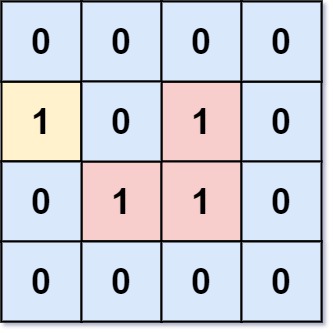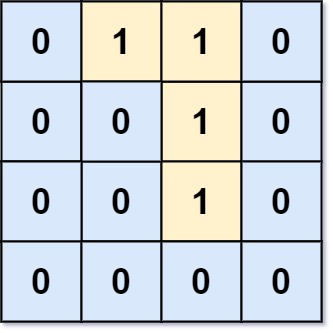Class Solution
java.lang.Object
g1001_1100.s1020_number_of_enclaves.Solution
1020 - Number of Enclaves\.
Medium
You are given an `m x n` binary matrix `grid`, where `0` represents a sea cell and `1` represents a land cell.
A **move** consists of walking from one land cell to another adjacent ( **4-directionally** ) land cell or walking off the boundary of the `grid`.
Return _the number of land cells in_ `grid` _for which we cannot walk off the boundary of the grid in any number of **moves**_.
**Example 1:**

**Input:** grid = \[\[0,0,0,0],[1,0,1,0],[0,1,1,0],[0,0,0,0]]
**Output:** 3
**Explanation:** There are three 1s that are enclosed by 0s, and one 1 that is not enclosed because its on the boundary.
**Example 2:**

**Input:** grid = \[\[0,1,1,0],[0,0,1,0],[0,0,1,0],[0,0,0,0]]
**Output:** 0
**Explanation:** All 1s are either on the boundary or can reach the boundary.
**Constraints:**
* `m == grid.length`
* `n == grid[i].length`
* `1 <= m, n <= 500`
* `grid[i][j]` is either `0` or `1`.
-
Constructor Summary
Constructors -
Method Summary
-
Constructor Details
-
Solution
public Solution()
-
-
Method Details
-
numEnclaves
public int numEnclaves(int[][] a)
-